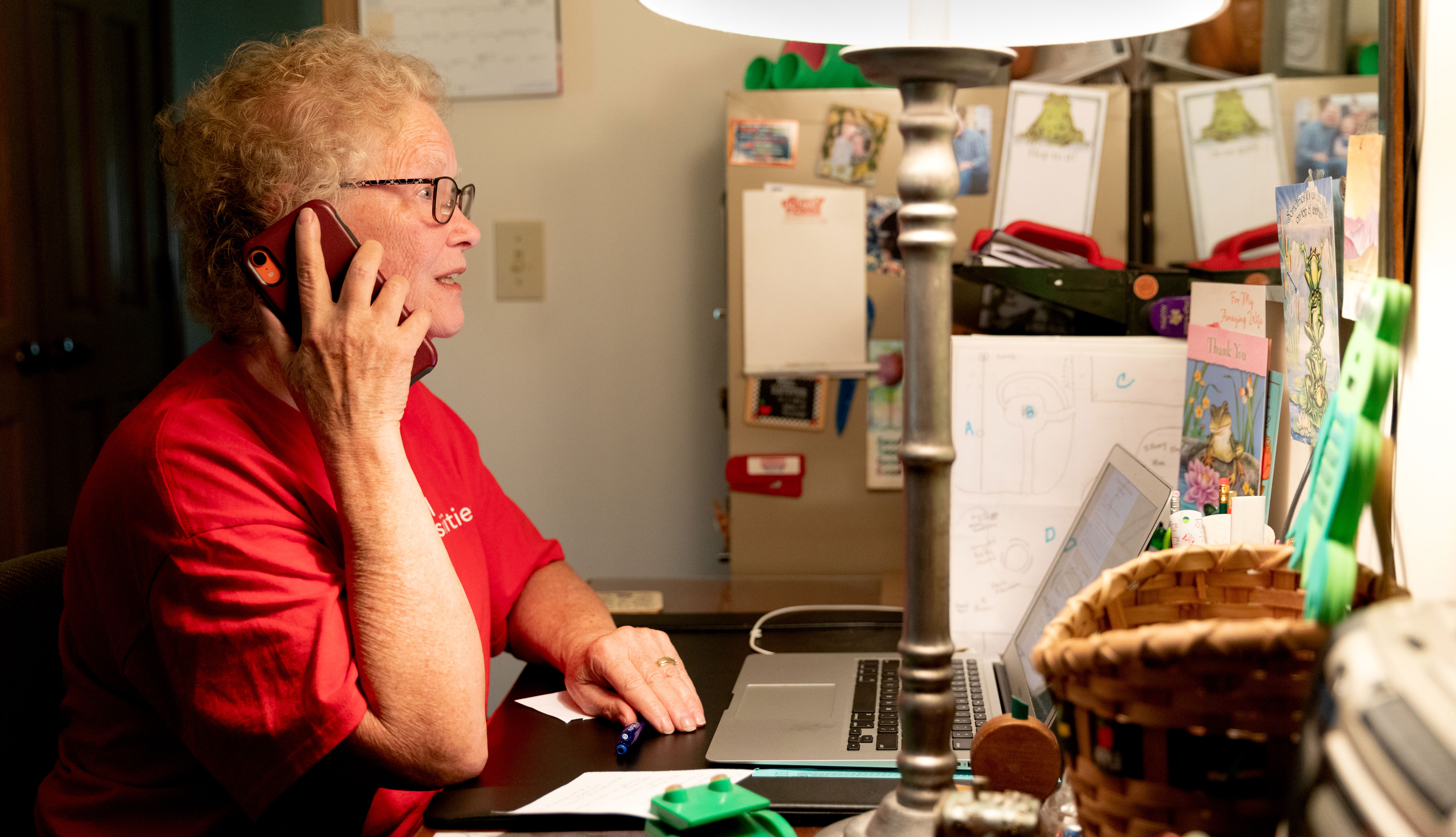AARP Hearing Center

Gwen Raupfer, 74, of Fort Wayne, felt the impact of loneliness and social isolation during the coronavirus pandemic. She couldn’t visit family or play cards with friends.
To return to the things she loves, she decided to get one of the COVID-19 vaccines.
“The vaccine is the best way to get back to being able to see friends and family,” Raupfer said. “For seniors, touching, hugging are very important.”
Next, as an AARP Indiana volunteer, she helped make hundreds of calls to spread the word so others could get vaccinated, too. The 15-member AARP Indiana volunteer team made 5,765 calls, connecting with 2,406 households during a three-month phone outreach campaign from January to April.
Callers shared vital information such as phoning 211 to schedule an appointment and how to register at ourshot.in.gov.
Indiana is below the national average for COVID-19 vaccination rates. Data for the state shows that fewer Black, Asian and Hispanic residents have received the vaccine, compared with the majority of white Hoosiers.
Overcoming hesitancy
During an April Facebook Live discussion, Sarah Waddle, state director for AARP Indiana; Virginia Caine, M.D., director of the Marion County Public Health Department; and Gary Health Commissioner Roland Walker, M.D., discussed the racial disparities in Indiana’s vaccine distribution rates as well as why some may hesitate to get the shot.
“Black Americans are being hit harder by the pandemic, and vaccine access, while improving, has not been equitable,” Waddle said.
No matter which vaccine you get, “if you can, protect yourself, your loved ones, your friends and colleagues,” Caine urged.
Caine and Walker believe that lower vaccination rates have less to do with distrust than barriers to getting vaccinated, given a lack of internet access and a dearth of nearby clinics.
The city of Gary has worked to remove those barriers, Walker said, by setting up a large Federal Emergency Management Agency vaccination site at a former high school and sending a mobile vaccination unit into the community every Friday to deliver shots to isolated, homebound residents.
“It’s really important that we go into homes and vaccinate people who may not be as mobile, make sure we get to our homeless population, our housing authorities,” Walker said.
When Raupfer spoke with older adults on the phone, many wanted to wait until later this summer to get vaccinated.
“They thought it had not been tested enough or long enough,” she said. “We remember growing up when polio was a big deal.”
The AARP volunteer provided information and wished them well. “I would remind them, ‘Stay healthy, wash your hands, watch your distance with people, and good luck. When you’re ready to consider it, 211 is a very easy option,’ ” Raupfer said.
AARP Indiana’s advocacy efforts to help older adults get vaccinated also include creating videos about vaccine experiences, hosting other telephone town halls in communities with low vaccination rates, social media outreach and working with community partners to get the word out.
Visit aarp.org/invaccine to learn more, or call 211 for further information and to schedule a vaccine appointment.
Diana Lamirand is a writer in Noblesville, Indiana.
More on COVID-19
- 5 Conditions That Can Compromise COVID-19 Vaccine Immunity
- Should You Get Your COVID-19 Card Laminated?































































